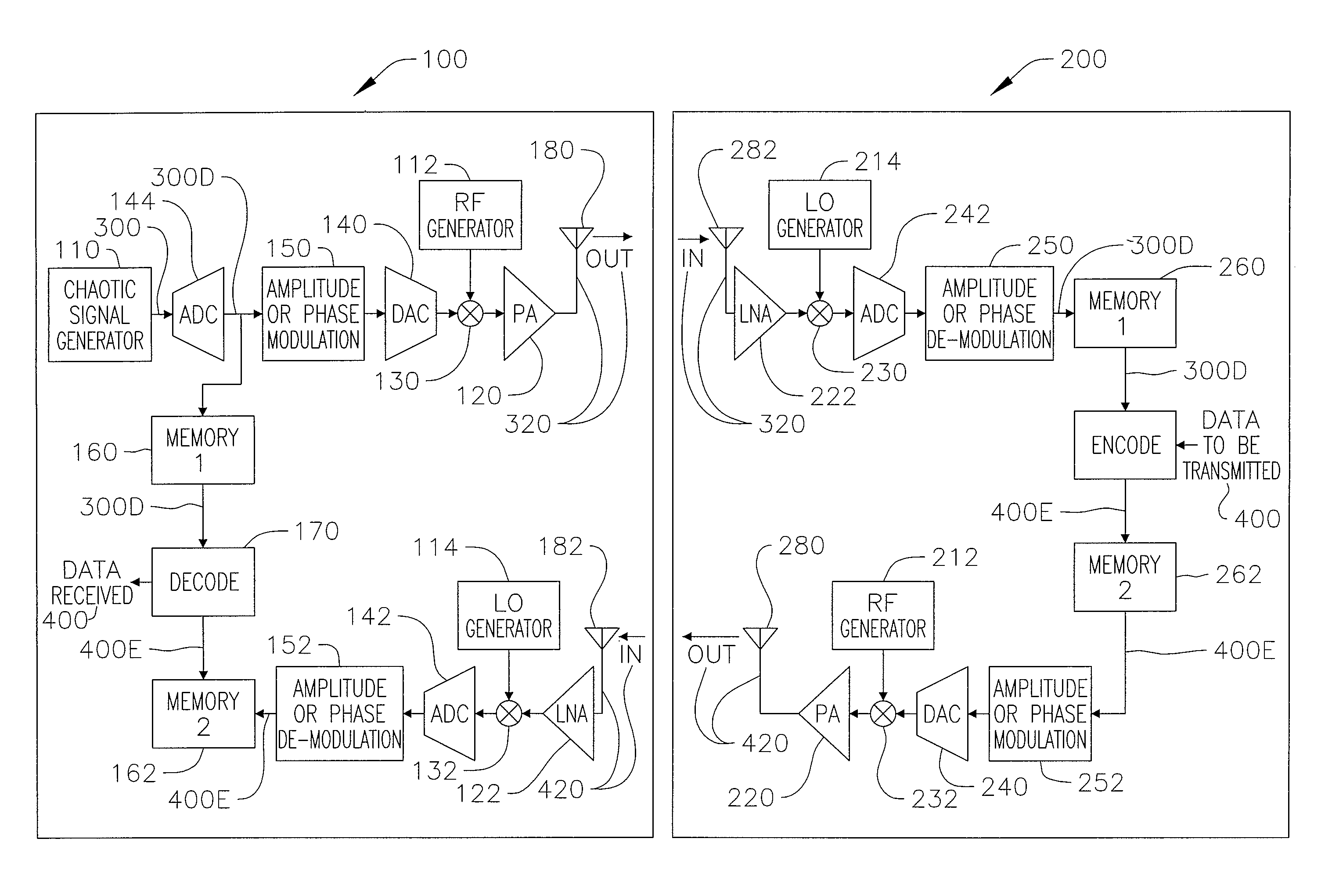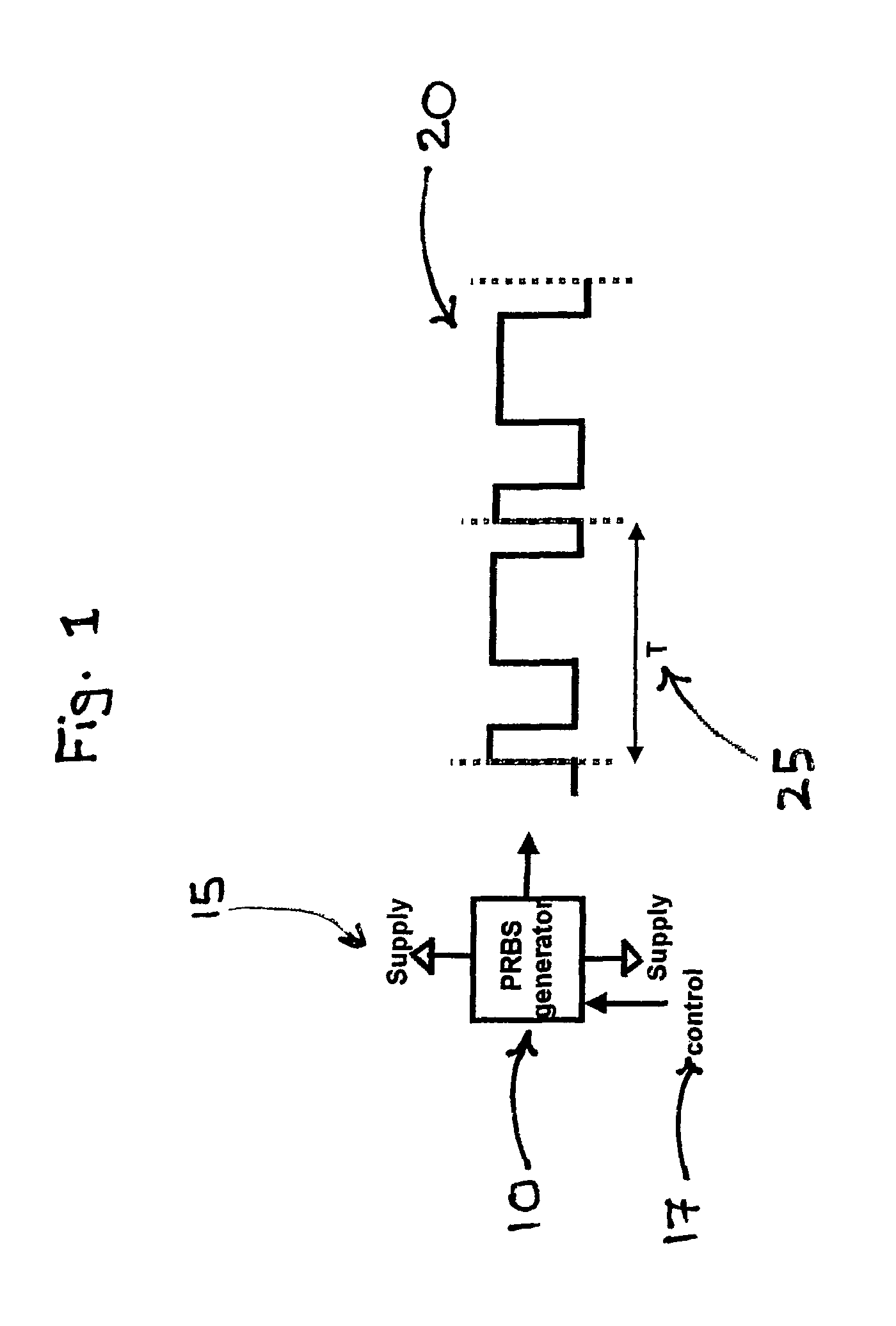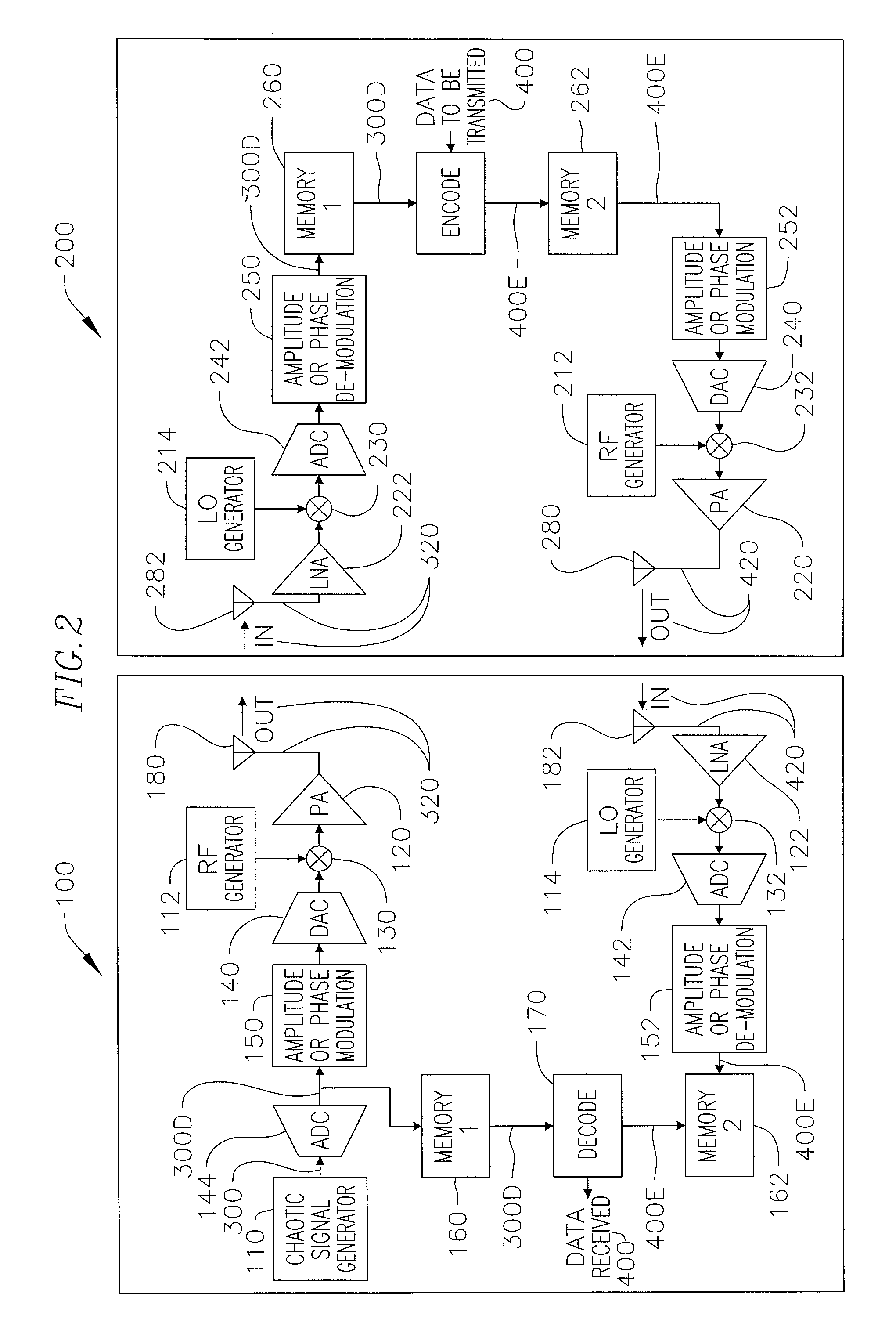Chaotic signal enabled low probability intercept communication
a low-probability, intercept communication technology, applied in the field of secure communication, can solve the problems of inability to replicate chaotic signals, and the inability to generate identical chaotic signals at the transmitter and receiver sites
- Summary
- Abstract
- Description
- Claims
- Application Information
AI Technical Summary
Benefits of technology
Problems solved by technology
Method used
Image
Examples
Embodiment Construction
[0036]The embodiments of the invention present a new scheme of low-probability intercept (LPI) communication, using non-recurring chaotic signals. In this scheme, the data receiver sends out a digitalized chaotic signal sequence to the data transmitter. The transmitter uses it to encode data to be sent. In the meanwhile, the receiver stores the digital chaotic signal. After receiving “returned” and encoded signal from the transmitter and with a proper synchronization, the receiver decodes the signal to extract data. In one embodiment, design and simulation of the analog chaotic signal generator is based on Indium Phosphide hetero junction bipolar transistors (InP HBTs).
[0037]FIG. 2 shows a chaotic signal enabled LPI communication system according to the embodiments of the invention. A non-recurrence analog chaotic signal generation scheme is shown in FIG. 2. The scheme of FIG. 2 includes a receiver 100 and a transmitter 200. The receiver 100 generates a chaotic signal 300 and sends ...
PUM
 Login to View More
Login to View More Abstract
Description
Claims
Application Information
 Login to View More
Login to View More - R&D
- Intellectual Property
- Life Sciences
- Materials
- Tech Scout
- Unparalleled Data Quality
- Higher Quality Content
- 60% Fewer Hallucinations
Browse by: Latest US Patents, China's latest patents, Technical Efficacy Thesaurus, Application Domain, Technology Topic, Popular Technical Reports.
© 2025 PatSnap. All rights reserved.Legal|Privacy policy|Modern Slavery Act Transparency Statement|Sitemap|About US| Contact US: help@patsnap.com



